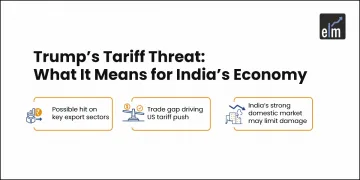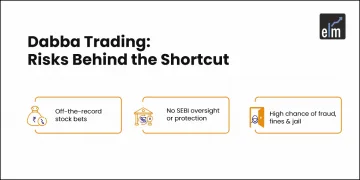To make the transition into trading easier, it’s important to understand basic concepts like trailing stop loss. To protect profits, trailing stop losses combine risk management and trading strategies. However, inexperienced traders frequently abuse the tool, leading to restrictions.
While trailing stops can reduce risk, they can also limit the amount of money that can be made. They should be considered as a risk management tactic, but keep in mind that they could limit profit potential.
When trading on a financial instrument, traders can set a predetermined loss percentage using a trailing stop loss. Effectively managing risks and protecting profits are two things it does. These are, therefore, also referred to as profit-protecting stops. The stop price changes accordingly as the price of a financial instrument increases or decreases.
A stop price is set at a fixed distance below the market price of a financial instrument when an investor takes a long position. It limits the number of losses a trader may sustain.
However, they do not cap the possible gain from an increased market price. As a result, it enables traders to book profits if the markets turn in the other direction-
In today’s blog, let us discuss 5 Powerful Techniques to Lock in Profits by using Trailing Stop Loss:
5 Powerful Techniques to Lock in Profits by Using Trailing Stop Loss
Let us discuss some techniques to lock in profits by using trailing stop loss:
1. Moving Average
One of the simplest ways to trail your stop loss is close, which is on the opposite side of a moving average indicator. There is no room for extraneous consideration or interpretation because a close beyond a moving average is obvious.
For illustration, you entered a short position at the arrow on this chart.
On the initial drop or retracement, you might have felt tempted to sell.

However, if you had used a moving average as your trailing stop loss, you could have made more money by waiting for a close above the moving average, as demonstrated above.
Moving averages come in a variety of configurations and types, of course. If you’re unsure where to begin, try these types of moving averages and see how they affect you.
- 20-period exponential moving average
- 50-period exponential moving average
- 100-period exponential moving average
Find the most profitable moving average setting by backtesting them all. Then, based on your observations, don’t be afraid to try out your own settings.
2. Parabolic SAR
The Parabolic SAR indicator is another simple way to trail your stop loss if you prefer technical indicators. On each candle, this indicator offers distinct levels where you can place your stop loss.
The PSAR dots in the following chart represent the levels where you should set your trailing stop loss. To ride the trend, traders typically trail their stop loss by 2 or 3 previous levels.

On the downside, the PSAR’s tendency to be slightly more sensitive than other trailing stop loss techniques may prevent it from capturing a long-term trend.
You can use the indicator on a longer timeframe or reduce the sensitivity of the settings to make up for this. You could, for instance, trail your stop loss using the PSAR on the daily chart while trading on the 4-hour chart.
3. Support and Resistance
Levels of support and resistance are excellent tools for lagging your stop. These levels, which consider the current market volatility, are typically obvious.
The only real drawback to using this method is that support and resistance levels must be drawn with some discretion.

To avoid moving your stop loss too early and getting stopped out too soon, you must be patient and wait for the support levels to develop. Before moving your stop loss, watch for a strong move away from a level to avoid this.
4. Risk Multiplier
The risk of multiple trailing stops is another trailing stop technique that is underutilized but has great potential. The idea is straightforward: You trail your stop loss each time the price reaches a multiple of it in points.
Let’s say, for illustration purposes, that you entered your trade with a 100 pip stop loss. The risk multiple also called the R multiple, 1R is 100 pip in this instance.
Therefore, you might want to trail your stop loss to breakeven when the price reaches 100 pip profit. From there, you might trail your stop loss to 100 pips (1R) of profit if the price reaches 200 pips of profit (2R).
5. 3 Candlestick Exit
This strategy is excellent for markets where prices frequently experience strong breakouts followed by swift reversals because it closely tracks your stop loss.
Here’s how it functions:
When your trade has reached a profit, trail your stop loss as follows:
- In a short trade, your stop is above the high of the third candle back.
- In a long trade, your stop is below the low of the third candle.
With every new candle that prints, move your stop loss. As you can see, your stop loss follows the price movement, allowing you to profit from large candles. But you are stopped out and take your profits off the table as soon as the price begins to consolidate or retrace.
You can also do our course on Masterclass on Short-term Momentum Trading
Advantages of Trailing Stop Losses
Below are the benefits of trading with trailing stop losses-
- This order type will sell your stock automatically when share levels drop.
- This order does not limit your profits. Shares can continue to rise, and you will stay invested if prices do not fall below your stop loss.
- The order is flexible. You can enter any trailing stop-loss percent for a customized risk management plan and change it.
- There is no extra cost for placing a stop-loss order.
- This order allows investors to take emotions out of their trades.
Disadvantages of Trailing Stop Losses
Below are the disadvantages of trading with trailing stop losses-
- There is no guarantee that you will receive the price of your stop-loss order. Some brokers do not allow stop-loss orders for specific stocks or exchange-traded funds (ETFs).
- Volatile stocks are difficult to trade with these orders
- You can lose the ability to make a thoughtful and analytical decision on whether to sell the stock when the price drops.
Bottomline
We hope you found this blog informative and use the information to its maximum potential in the practical world. Also, show some love by sharing this blog with your family and friends and helping us spread financial literacy.
Happy Investing!
To get the latest updates about Financial Markets, visit StockEdge






